

West Bengal, located in eastern India, is renowned for its rich cultural heritage, intellectual traditions, and revolutionary history. With Kolkata as its capital, West Bengal has been at the forefront of India's cultural and intellectual renaissance. The state is famous for its contributions to literature, art, cinema, and music, creating a unique identity that blends tradition with progressive thinking. From the majestic Himalayas in the north to the Sundarbans in the south, West Bengal presents a perfect blend of natural beauty, cultural richness, and intellectual vibrancy.

West Bengal stands unique in Indian history as the epicenter of cultural renaissance, intellectual awakening, and revolutionary movements. The region has been a cradle of art, literature, science, and social reform that has shaped modern India's intellectual landscape.
The Bengal Renaissance (19th-early 20th century) marked a period of significant social, cultural, and intellectual awakening. Led by visionaries like Raja Ram Mohan Roy, Ishwar Chandra Vidyasagar, Rabindranath Tagore, and Swami Vivekananda, this movement challenged social evils, promoted education, and created a new wave of artistic and literary expression. The establishment of institutions like Hindu College (now Presidency University) and the University of Calcutta created an educated middle class that would lead India's intellectual development.
The region's history dates back to ancient kingdoms like the Pundra, Vanga, and Gauda kingdoms. The Pala Empire (8th-12th centuries) established Bengal as a major center of Buddhist learning and art. The Sena dynasty that followed promoted Hinduism and Sanskrit literature. The medieval period saw the arrival of Islam and the establishment of the Bengal Sultanate, which developed a distinct Indo-Islamic culture.
British colonial rule began with the Battle of Plassey in 1757, making Bengal the center of British India. Calcutta (now Kolkata) became the capital of British India until 1911, transforming into a major metropolitan center. This period saw both exploitation and enlightenment - while the colonial economy drained Bengal's resources, it also exposed Bengalis to Western education and ideas, sparking the Bengal Renaissance.
The early 20th century witnessed the rise of revolutionary nationalism, with Bengal producing numerous freedom fighters. The partition of Bengal in 1905 sparked massive protests and the Swadeshi movement. Figures like Subhas Chandra Bose, Khudiram Bose, and countless others made significant contributions to India's freedom struggle.
Post-independence, West Bengal continued its tradition of intellectual and cultural leadership while facing challenges of partition, refugee rehabilitation, and industrial decline. The state has produced Nobel laureates in multiple fields and remains India's cultural capital.
Today, West Bengal takes pride in this unique heritage. The literary works of Rabindranath Tagore, the films of Satyajit Ray, the art of the Bengal School, and the scientific contributions of Jagadish Chandra Bose represent this rich legacy. The state's vibrant culture, characterized by its Durga Puja celebrations, Rabindra Sangeet, and adda culture, reflects this blended historical legacy.
West Bengal's renaissance legacy is not just historical; it's a living tradition that continues to shape the state's identity. From the architecture of its colonial buildings to the rhythm of its music and the flavors of its food, this heritage makes West Bengal a fascinating example of cultural continuity and intellectual vitality.
West Bengal is known for its rich literary heritage, which is reflected in its linguistic landscape. The state's language traditions showcase its unique history as the heartland of Bengali culture and intellectual movements.
Bengali is the official language of West Bengal and is spoken by the majority of the population. It belongs to the Indo-Aryan language family and has a rich literary tradition dating back over a thousand years. Bengali is known for its sweet, melodic quality and is one of the most spoken languages in the world.
The languages of West Bengal reflect its unique position as the cultural heartland of Bengali civilization. While Bengali remains the soul of Bengali identity, the presence of English, Hindi, Urdu, and tribal languages creates a rich linguistic tapestry that mirrors the state's history as a meeting point of different cultures and intellectual traditions.
West Bengal's festivals reflect its deep spiritual traditions, artistic heritage, and cosmopolitan culture, creating a cultural calendar that is vibrant, intellectual, and deeply rooted in tradition. From grand religious celebrations to cultural festivals, West Bengal's events showcase the state's devotional spirit, artistic excellence, and intellectual vibrancy.
Durga Puja is the most important and widely celebrated festival in West Bengal, known for its artistic pandals, cultural programs, and community celebrations. This festival marks the victory of Goddess Durga over the buffalo demon Mahishasura and is celebrated with unprecedented enthusiasm across the state.

The Durga Puja festival is more than just a religious celebration; it is the ultimate expression of Bengali culture that transcends religious and social boundaries. With its artistic pandals, cultural programs, and community feasts, Durga Puja perfectly embodies West Bengal's unique identity as a land where art, spirituality, and community coexist harmoniously.
Poila Boishakh is the Bengali New Year festival celebrated with great enthusiasm across West Bengal. This festival marks the beginning of the new year according to the Bengali calendar and is characterized by cultural programs, traditional rituals, and festive foods.
Poila Boishakh, which means "the first day of Boishakh," typically falls on April 14 or 15. The festival begins with ritual prayers, wearing new clothes, and visiting relatives. Businesses start new account books, and cultural organizations host special events celebrating Bengali culture.
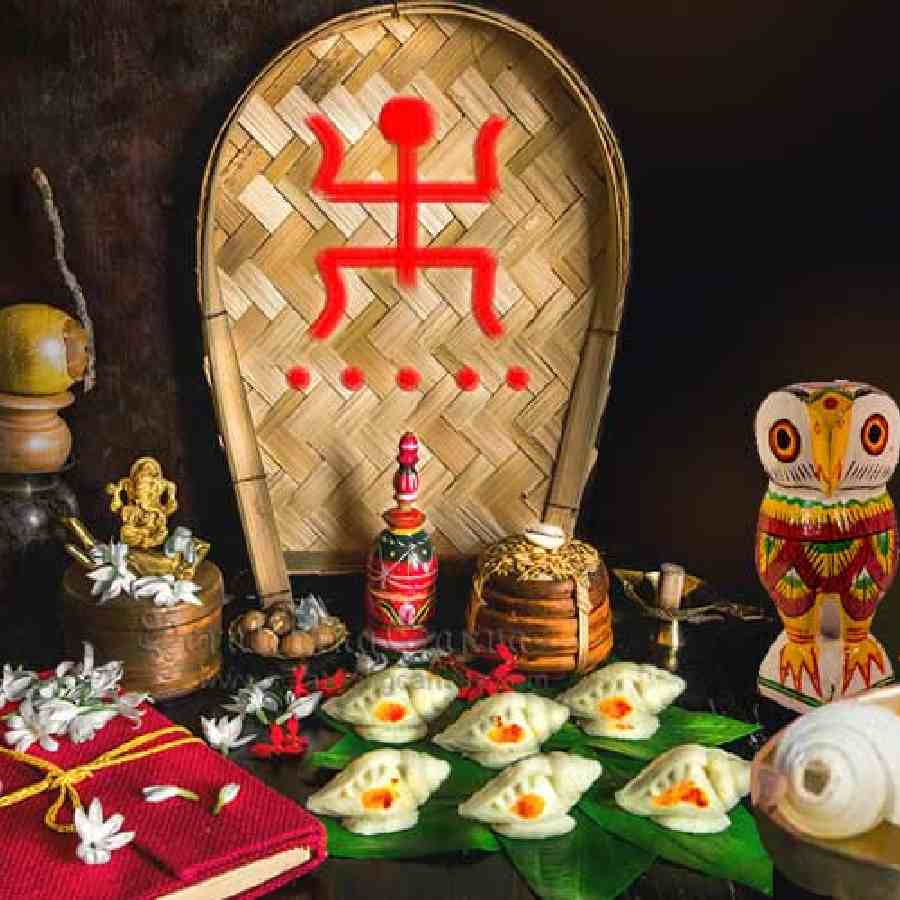
Poila Boishakh is a testament to West Bengal's rich cultural traditions and its celebration of Bengali identity. The rituals and festivities displayed during this festival reflect the artistic spirit of Bengali culture and its connection to seasonal cycles and community bonds.
Kali Puja is a major festival in West Bengal dedicated to Goddess Kali, the fierce form of divine feminine power. Celebrated with great devotion, especially in Kolkata, this festival showcases Bengal's unique spiritual traditions and artistic expressions.
Kali Puja represents the rich spiritual heritage of West Bengal, showcasing unique worship traditions and artistic expressions. As a festival that highlights Bengal's distinct religious practices, it connects modern Bengalis to their spiritual roots while adapting to contemporary celebrations.
The festivals of West Bengal showcase its unique cultural synthesis, where Hindu, Muslim, and Christian traditions coexist and often influence each other. This harmonious blend of celebrations reflects the spirit of West Bengal - artistic, intellectual, inclusive, and deeply rooted in both spiritual and cultural traditions.

West Bengal, known as the "Cultural Capital of India," is a state of rich heritage, intellectual traditions, and diverse landscapes. From the bustling metropolis of Kolkata to the serene hill stations of Darjeeling, each urban center in West Bengal has its own distinct character, contributing to the state's reputation as a land of art, literature, and revolutionary spirit.
Kolkata, formerly Calcutta, is the capital city of West Bengal and known as the "Cultural Capital of India." Located on the east bank of the Hooghly River, it serves as the commercial, cultural, and educational hub of Eastern India. Kolkata beautifully preserves its colonial heritage while embracing modernity, creating a unique urban experience.

The Victoria Memorial is one of Kolkata's most recognizable landmarks, built between 1906 and 1921 in memory of Queen Victoria. This magnificent marble building combines British and Mughal architectural elements and stands surrounded by lush gardens, creating a serene oasis in the heart of the city.

The memorial houses a museum that showcases the history of Kolkata and Bengal through paintings, sculptures, manuscripts, and other artifacts from the colonial period. The collection includes works by European and Indian artists, historical documents, and memorabilia from the British era. The gardens surrounding the memorial are a popular recreational space for locals and tourists alike.
The Victoria Memorial is not just a tourist attraction but also a symbol of Kolkata's colonial past and its transformation into a modern Indian city. It represents the complex legacy of British rule in India - both the architectural grandeur and the historical contradictions. The memorial's sound and light show in the evenings narrates the story of Kolkata's history.
Today, the Victoria Memorial stands as a testament to Kolkata's ability to preserve its historical heritage while moving forward. Its combination of architectural beauty, historical significance, and recreational value makes it a must-visit destination in West Bengal, showcasing the state's connection to its past and its contemporary cultural vitality.

The Howrah Bridge is one of Kolkata's most iconic landmarks and one of the busiest cantilever bridges in the world. Completed in 1943, this engineering marvel spans the Hooghly River, connecting Kolkata with its twin city Howrah. The bridge was renamed Rabindra Setu in 1965 after Nobel laureate Rabindranath Tagore.
The bridge is constructed without any nuts and bolts, using the cantilever method with riveted construction. It stretches 705 meters (2,313 feet) over the Hooghly River and carries approximately 100,000 vehicles and countless pedestrians daily. The bridge has become an integral part of Kolkata's identity, featuring prominently in literature, films, and art.
Howrah Bridge is not just a transportation artery but also a social space where life unfolds throughout the day. From early morning walkers to evening vendors, from commuting office workers to curious tourists, the bridge witnesses the entire spectrum of Kolkata life. The nearby Howrah Station, one of India's oldest and busiest railway stations, adds to the bridge's significance.
Today, the Howrah Bridge represents Kolkata's resilience and continuity. It has survived wars, natural calamities, and the test of time, remaining a vital connection between different parts of the city. The bridge stands as a symbol of Kolkata's engineering prowess, historical significance, and daily rhythms, making it an essential experience for anyone visiting West Bengal.

The Dakshineswar Kali Temple is one of the most important Hindu temples in West Bengal, dedicated to Goddess Kali. Located on the eastern bank of the Hooghly River, the temple is famous for its association with Sri Ramakrishna Paramahamsa, the 19th-century mystic and spiritual leader who served as the temple's head priest.
The temple complex was built in 1855 by Rani Rashmoni, a philanthropist and devotee of Kali. The main temple features the nine-spired style of Bengal architecture and houses the idol of Bhavatarini, an aspect of Kali. The complex includes twelve identical temples dedicated to Shiva along the riverbank, a temple to Radha-Krishna, and a bathing ghat on the river.
Dakshineswar Temple is not only a place of worship but also a center of spiritual significance. It was here that Sri Ramakrishna attained spiritual enlightenment and practiced various religious paths, ultimately preaching the harmony of all religions. His room, where he lived and meditated, is preserved as a shrine within the temple complex.
Today, the Dakshineswar Kali Temple attracts thousands of devotees and tourists throughout the year. The temple represents West Bengal's rich religious heritage and spiritual traditions. Its riverside location, architectural beauty, and historical significance make it both a spiritual destination and a cultural landmark, offering visitors insights into Bengal's devotional practices and philosophical contributions.
The Indian Museum in Kolkata is the oldest and largest museum in India, established in 1814. Located on Chowringhee Road, this prestigious institution houses some of India's most valuable collections of artifacts, art, and natural history specimens, making it a treasure trove for researchers, historians, and visitors.
The museum spans an entire city block and features multiple galleries dedicated to different subjects. The archaeological section displays artifacts from ancient civilizations, including the Harappan civilization. The art section features collections of Mughal paintings, textiles, and decorative arts. The anthropological section showcases the cultural diversity of India's tribal communities.
Key attractions include the Egyptian mummy, the Buddhist gallery with relics from Bodh Gaya, the Bharhut Gallery with railings from the ancient Bharhut Stupa, and the coin gallery with specimens from different historical periods. The museum also has extensive natural history collections, including fossils, minerals, and taxidermied animals.
The Indian Museum represents Kolkata's position as India's intellectual and cultural capital during the colonial period and its continuing importance in preserving cultural heritage. The museum's collections and research activities contribute to our understanding of India's history, art, and natural environment. It stands as a testament to West Bengal's commitment to education, research, and cultural preservation, offering visitors a comprehensive view of India's rich heritage.
Kolkata embodies the intellectual and artistic soul of West Bengal while embracing its colonial heritage and contemporary aspirations. As the cultural capital, it offers artistic excellence, intellectual vitality, and urban diversity while maintaining a unique character. From its colonial architecture to its vibrant cultural scene, Kolkata is a city that captures the essence of Bengali culture and represents the dynamic spirit of West Bengal.
Darjeeling, located in the Lesser Himalayas, is known as the "Queen of Hills" and is one of India's most famous hill stations. The town is renowned for its tea industry, stunning views of Kanchenjunga, and colonial-era architecture, offering a perfect escape from the plains.
Darjeeling offers a refreshing mountain experience that complements West Bengal's plains and cities. As the Queen of Hills, it showcases the state's geographical diversity through its tea gardens, mountain views, and colonial heritage. For visitors seeking natural beauty and tranquility, Darjeeling provides a perfect Himalayan retreat within West Bengal.
Siliguri, located in the foothills of the Himalayas, is known as the "Gateway to Northeast India." The city serves as a major commercial, transportation, and educational hub connecting mainland India with the northeastern states and neighboring countries.
Siliguri represents West Bengal's strategic importance and commercial vitality in the eastern region. As the Gateway to Northeast, it showcases the state's role in regional connectivity through its transportation networks, trade activities, and cultural exchanges. For those traveling to northeastern India or neighboring countries, Siliguri provides essential services and insights into West Bengal's borderland dynamics.
Durgapur, located on the banks of the Damodar River, is known as the "Steel City of West Bengal." The city was developed as a major industrial center and represents West Bengal's industrial capabilities and economic aspirations.
Durgapur represents the industrial strength of West Bengal, where manufacturing and technology create economic opportunities. The city's industries, educational institutions, and planned development offer insights into West Bengal's industrial heritage and future aspirations. For those interested in India's industrial development, Durgapur provides valuable perspectives on West Bengal's role in the nation's economic growth.
Shantiniketan, located in the Birbhum district, is known as the "Abode of Peace" and is famous as the home of Visva-Bharati University founded by Rabindranath Tagore. This university town represents West Bengal's educational heritage and cultural innovations.
Shantiniketan represents the educational and cultural ideals of West Bengal, where learning, arts, and nature combine to create a unique environment. As the Abode of Peace, it showcases Rabindranath Tagore's vision of education and cultural synthesis. The town's university, cultural events, and natural beauty make it an essential destination for understanding West Bengal's intellectual heritage and artistic contributions.
The cities of West Bengal each contribute uniquely to the state's character. Kolkata represents the cultural and intellectual capital, Darjeeling the natural beauty and tea heritage, Siliguri the commercial gateway, Durgapur the industrial strength, and Shantiniketan the educational ideals. Together, these urban centers showcase the diversity that makes West Bengal much more than just a state—they reveal a region with profound cultural heritage, intellectual traditions, geographical variety, and economic strengths that balance tradition with progress. From colonial architecture to Himalayan landscapes, from steel plants to university towns, West Bengal's cities offer experiences that capture the essence of this culturally rich Indian state.
West Bengal food is renowned for its delicate flavors, balanced spices, and diverse vegetarian and non-vegetarian specialties. The cuisine reflects the state's geographical diversity, cultural sophistication, and historical influences. Known for its fish preparations and sweets, Bengali food offers a delightful experience that emphasizes subtlety and complexity of flavors.
Bengali Thali is the quintessential dining experience in West Bengal, featuring a complete platter of various dishes that showcase the diversity and sophistication of Bengali cuisine. This traditional meal represents the culinary heritage of Bengal in a single sitting.
Bengali Thali is more than just a meal; it's a cultural experience that embodies the essence of Bengali hospitality and culinary artistry. Its complex arrangement and subtle flavors have evolved over centuries, making it the crown jewel of Bengali dining culture.
Macher Jhol is a signature Bengali dish that exemplifies the state's love for fish and delicate flavors. This light fish curry is a staple in Bengali households and is known for its subtle spicing and comforting qualities.
Macher Jhol is a perfect example of Bengal's culinary identity, where freshwater fish is transformed into a delicate and comforting dish. Its subtle flavors and simple preparation tell the story of Bengal's geographical features and its ability to create distinctive food from locally available ingredients.
Rosogolla is West Bengal's most famous sweet, known and loved throughout India and beyond. These soft, spongy cheese balls soaked in sugar syrup represent the sweet side of Bengali cuisine and are a source of great pride for the state.
Rosogolla is more than just a sweet; it's an icon of Bengali culture that embodies the state's sweet-making expertise. Its perfect texture and delightful taste represent the care and tradition that goes into Bengali cooking, making it a fitting conclusion to any Bengali meal and a sweet representation of West Bengal's culinary heritage.
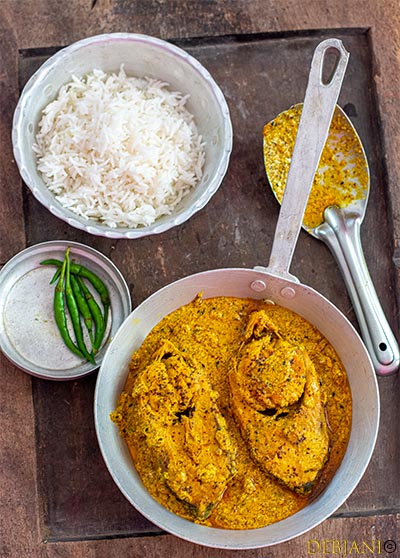
Hilsa fish cooked in mustard paste, a Bengali delicacy.
Prawns cooked in coconut milk, a rich and flavorful dish.
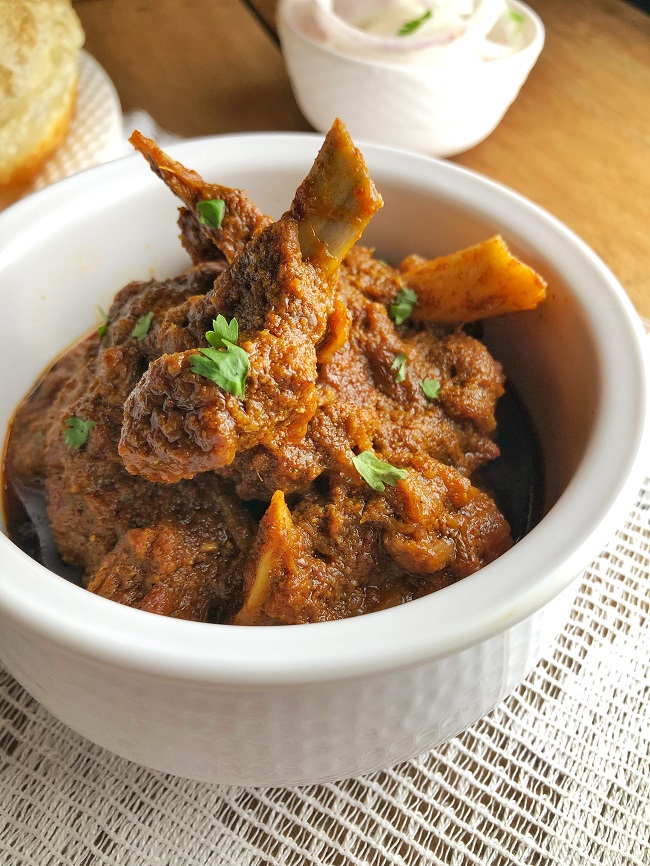
Slow-cooked mutton curry with robust spices.
Sweetened yogurt, a traditional Bengali dessert.
West Bengal cuisine is a vibrant tapestry woven from indigenous Bengali traditions and historical influences, with additional touches from geographical features that have shaped the region's food culture over centuries. From the delicate flavors of Macher Jhol to the iconic sweetness of Rosogolla, Bengali food tells the story of a people who have mastered the art of balancing subtle flavors. Each dish is not just nourishment but a celebration of Bengal's unique cultural identity and its position as a land of rivers, artistic sophistication, and culinary excellence.
West Bengal fashion is a vibrant reflection of its cultural renaissance, intellectual traditions, and artistic heritage. From traditional attire that tells stories of literary excellence to contemporary styles influenced by global trends, Bengali clothing represents a unique blend of elegance, simplicity, and cultural identity. The fashion scene in West Bengal beautifully balances tradition with modernity, creating a distinctive style that is both sophisticated and comfortable.
Did you know? West Bengal fashion is heavily influenced by its intellectual and artistic movements, with traditional attire often featuring simple yet elegant designs that reflect Bengali aesthetic sensibilities, complemented by the practical clothing needs of its urban and rural communities.
Traditional West Bengal men's attire reflects the state's intellectual heritage combined with cultural sophistication. From formal occasions to everyday wear, these garments showcase a unique cultural identity that has evolved through Bengal's renaissance period.
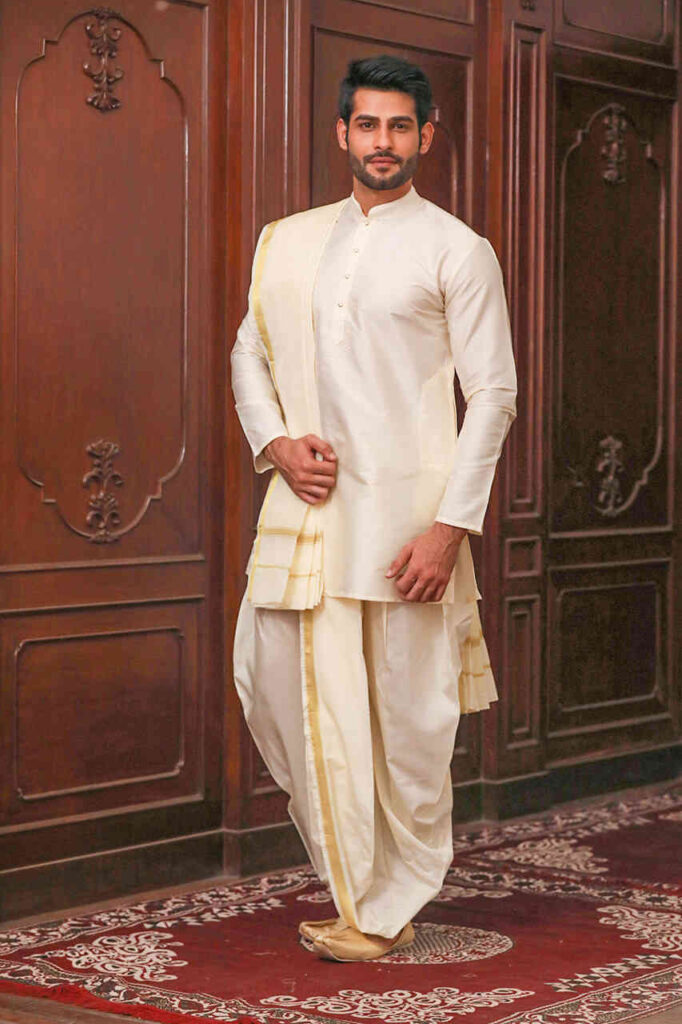
Traditional West Bengal men's fashion represents the harmonious blend of indigenous traditions and colonial influences. The retention of traditional elements while adapting to modern urban life creates a unique sartorial identity that distinguishes Bengalis from other Indian communities.
West Bengal women's traditional attire is a beautiful representation of cultural elegance and practical needs. The clothing reflects both the aesthetic sensibilities of the Bengal Renaissance and the practical requirements of daily life in different regions of the state.
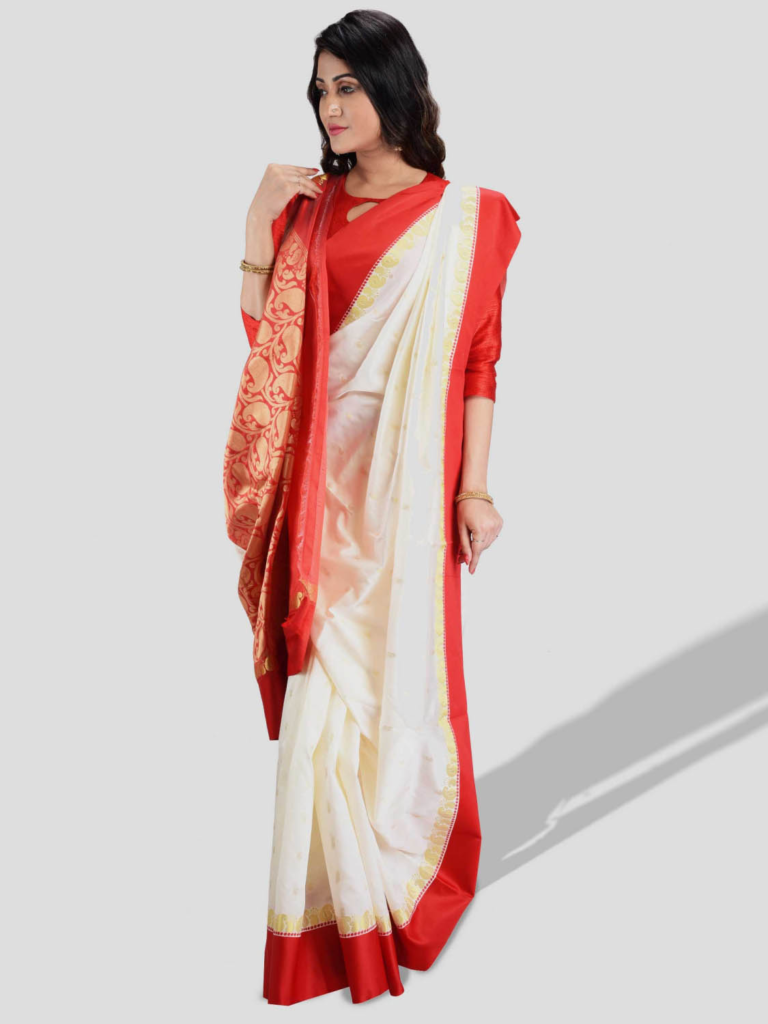

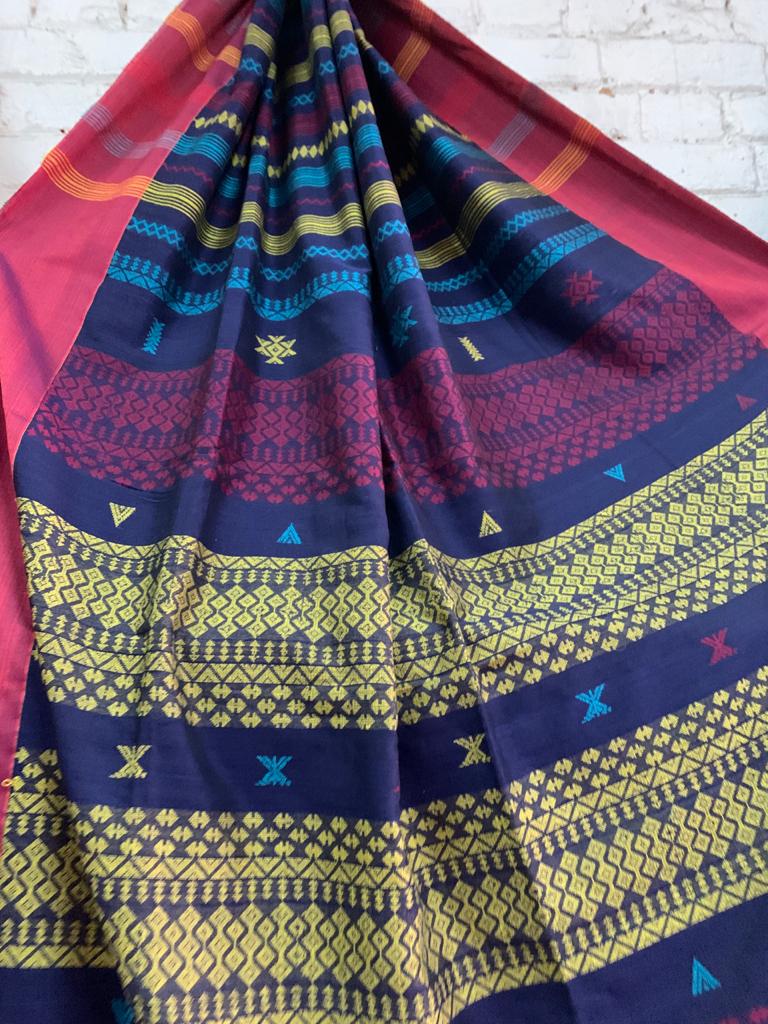
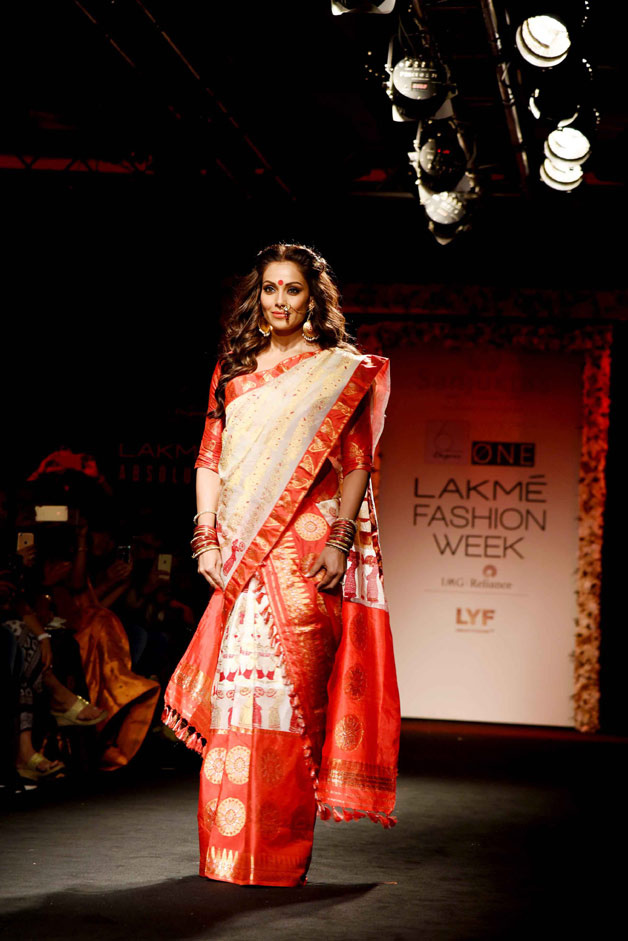
Women's fashion in West Bengal tells a story of cultural preservation and intellectual expression. The distinct styles showcase how Bengali aesthetics evolved through the renaissance period, combining simplicity with elegance. The traditional attire reflects Bengal's artistic heritage, while contemporary adaptations acknowledge modern urban life.
West Bengal textiles reflect the state's artistic heritage, cultural diversity, and historical trade connections. The fabrics used in traditional clothing prioritize comfort, elegance, and suitability for the region's climate.
The textile traditions of West Bengal have evolved significantly over centuries. Ancient textiles were primarily simple cottons. During the Mughal period, fine muslins and intricate weaves developed. The colonial period introduced new influences, while the post-independence era saw a revival of traditional techniques alongside contemporary innovations.
Contemporary West Bengal fashion represents a dynamic blend of traditional elements with global influences, heavily shaped by Kolkata's urban culture, education, and the state's artistic traditions. The modern Bengali wardrobe seamlessly transitions from traditional attire for festivals to contemporary styles for daily wear.
Simple cotton garments suited for the tropical climate.
Development of fine textiles like muslin and intricate weaves.
Blending of Bengali and Western fashion elements.
Globalization and revival of traditional textiles in contemporary fashion.
West Bengal has produced several fashion designers who have gained recognition for their work that often incorporates Bengali cultural elements.
West Bengal fashion is a dynamic and evolving expression of the state's unique cultural identity. Rooted in artistic traditions and intellectual heritage, it represents a harmonious blend of simplicity and sophistication. From the traditional sarees of Bengali women to the elegant dhotis of men, Bengali clothing tells a story of cultural continuity, artistic expression, and pride in heritage.
As West Bengal continues to navigate the intersection of tradition and modernity, its fashion scene remains a vibrant reflection of this balance. The international recognition of Bengali designers suggests an exciting future where traditional elements will continue to influence global fashion trends while adapting to contemporary sensibilities.
Future Trends: The next decade will likely see increased emphasis on sustainable practices, technological integration in textile production, and further innovation in fusion wear that respects traditional craftsmanship while embracing global fashion currents.